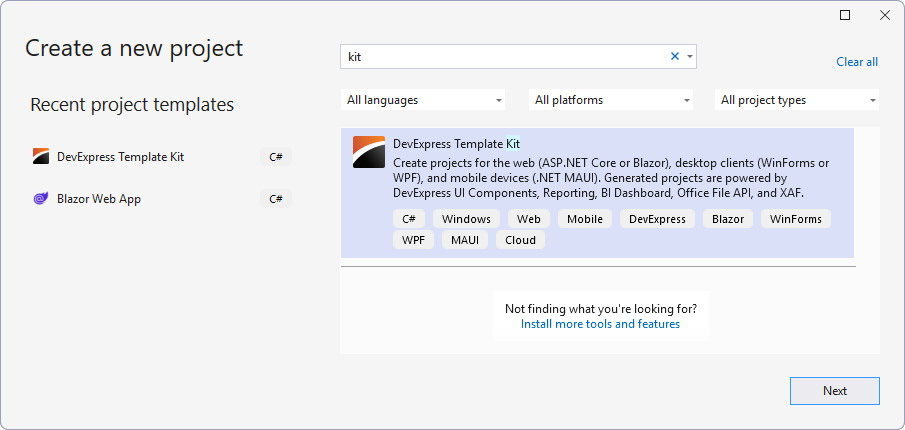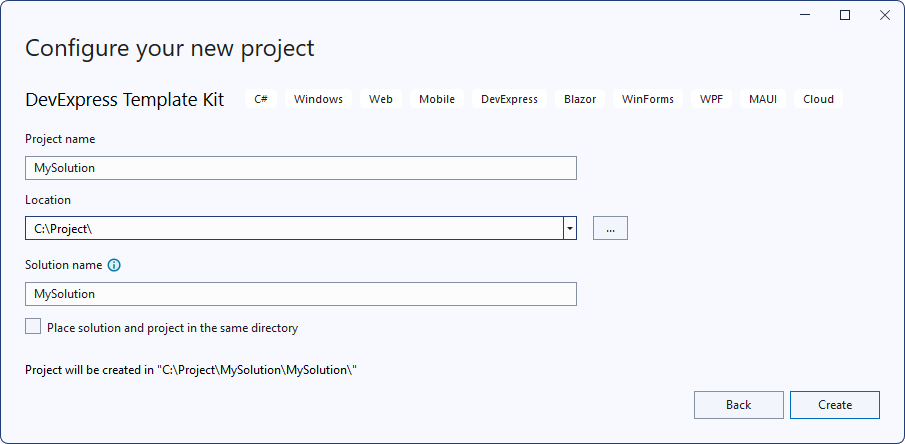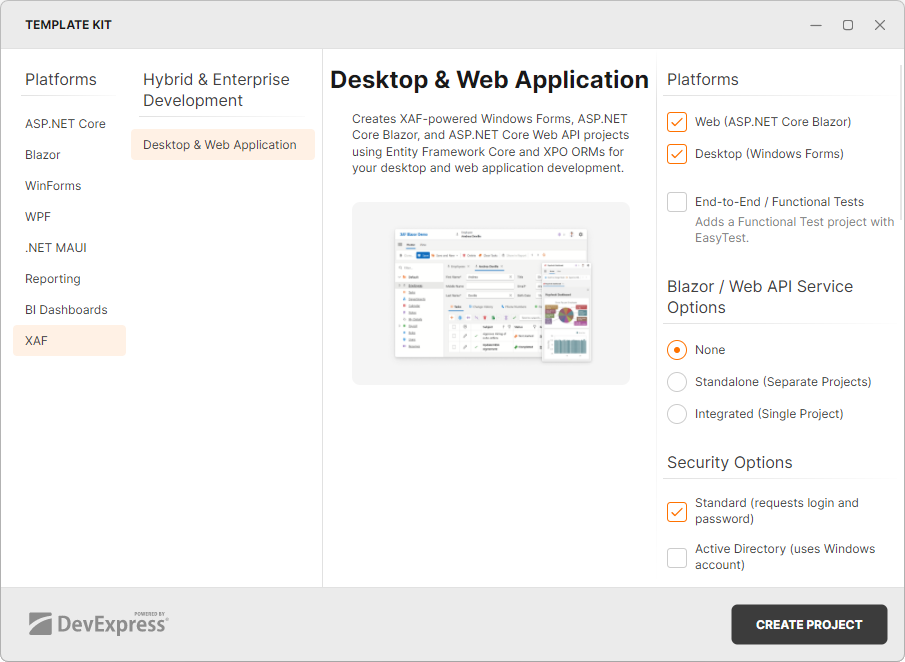Create a Solution
- 2 minutes to read
This lesson explains how to use the DevExpress Template Kit to create a Cross-Platform .NET App UI (XAF) application for ASP.NET Core Blazor and Windows Forms, including authentication features.
Step-by-Step Instructions
From Visual Studio’s main menu, select File | New | Project… to invoke the Create a new project dialog.

Select DevExpress v25.2 Template Kit and click Next.

Specify the project’s name (MySolution) and location and click Create.

In the invoked Template Kit window, select XAF and specify the following solution settings:
- In the Platforms section, select Web (ASP.NET Core Blazor) and Desktop (Windows Forms) options.
- In the Security Options section, deselect the Standard option. In this tutorial, we implement user authentication at a later stage.
- In the Additional Modules section, select the Validation module.
Leave the rest of the options in their default state and click Create Project.

Solution Structure
The solution contains the following projects:
- MySolution.Module
- A module project that contains platform-independent code. Use this project to define the business logic that applies to all target platforms.
- MySolution.Blazor.Server
- An ASP.NET Core Blazor application that generates a user interface based on the business logic you define in MySolution.Module.
- MySolution.Win
- A WinForms application that generates a user interface based on the business logic you define in MySolution.Module.

Refer to the Application Solution Structure topic for information on the XAF solution structure.
Database Connection
The DevExpress Template Kit allows you to create XAF applications that target Entity Framework Core(the default choice) or XPO ORM tool. For additional information on how to choose an ORM that suits your needs, refer to the following topic: Why We Recommend EF Core over XPO for New Development.
When you create a new application, the application wizard attempts to find an installed Microsoft SQL Server instance (LocalDB or Express) and sets the connection string accordingly. You can also connect to a different database system as described in the following topic: Connect an XAF Application to a Database Provider.
First Run
You can now run the application. Click Start Debugging or press F5.
The ASP.NET Core Blazor project is set as the startup project. To run the Windows Forms application, right-click the MySolution.Win project in the Solution Explorer and select the Set as Startup Project item from the context menu.
The following images show the resulting ASP.NET Core Blazor and Windows Forms applications.
- ASP.NET Core Blazor

- Windows Forms
